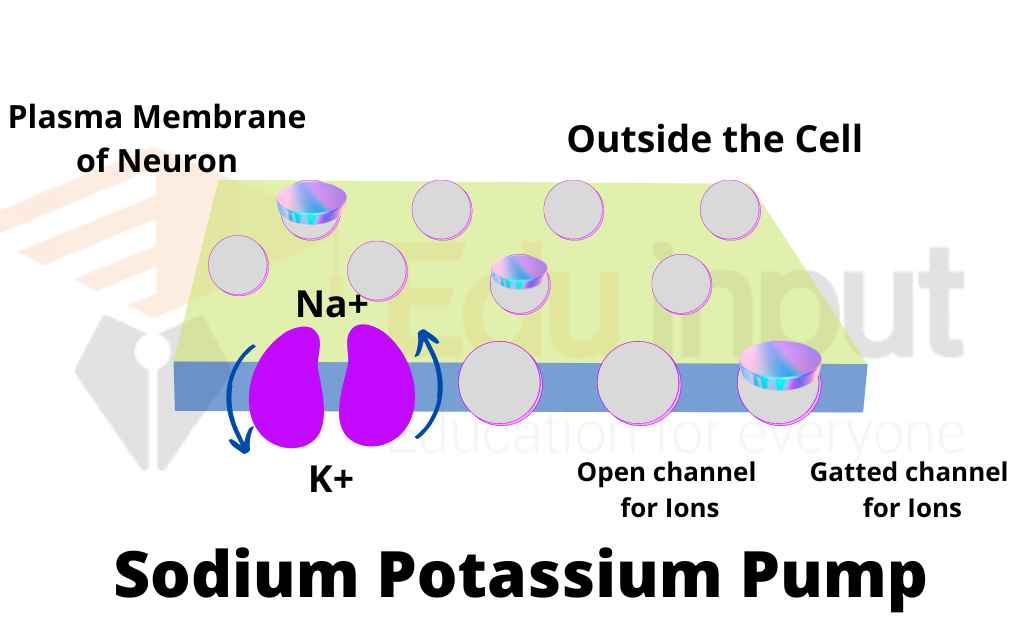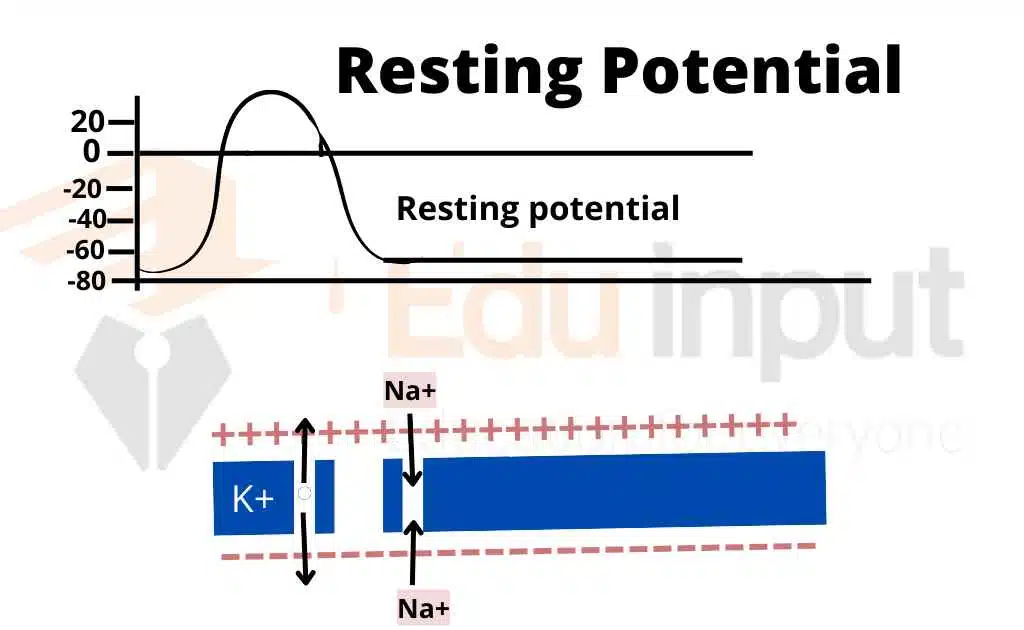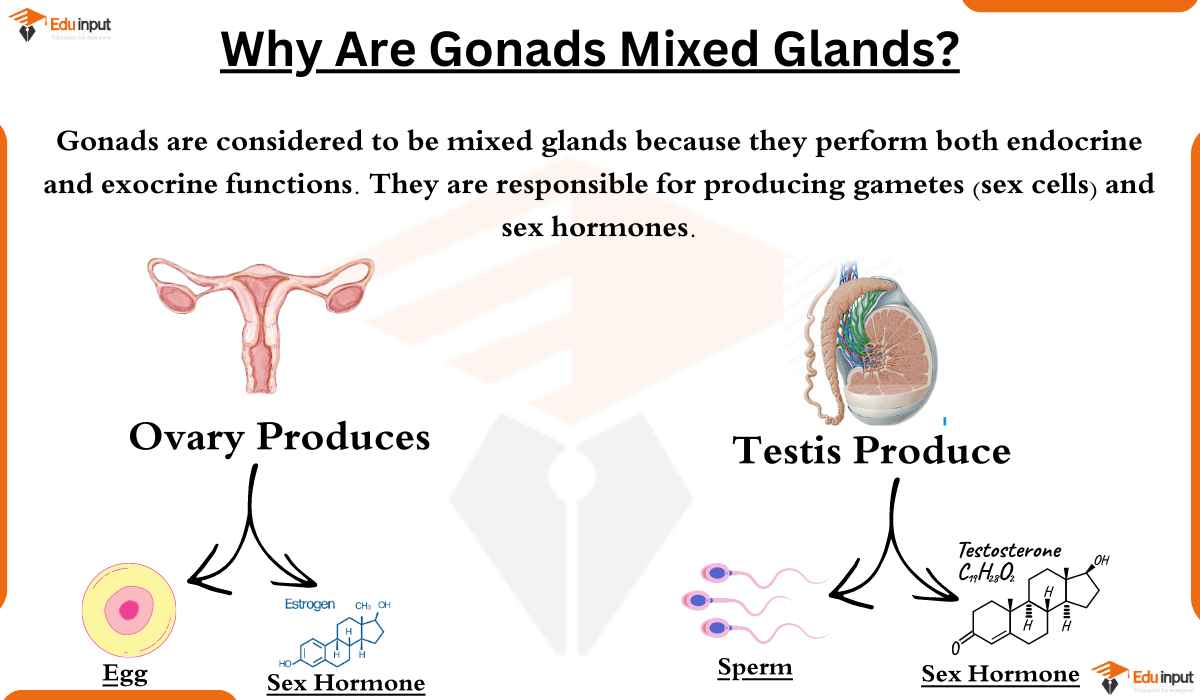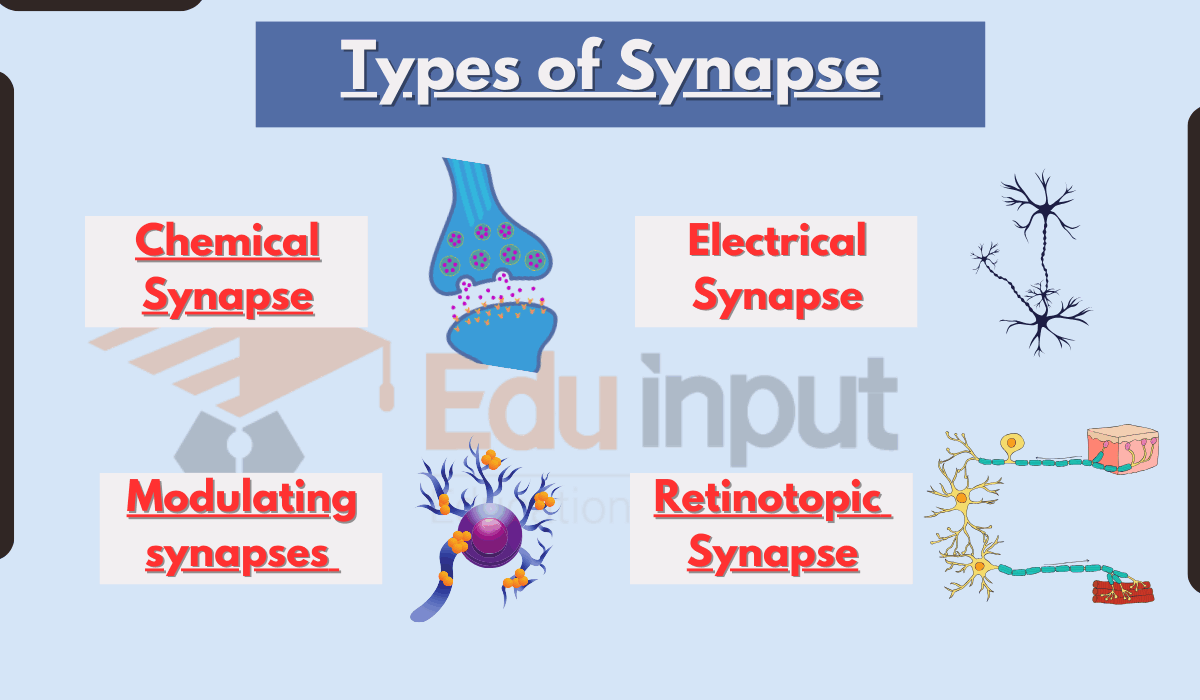Resting Membrane Potential
How do neurons produce electrical signals? At a basic level, neurons generate electrical signals by changing the permeability of their cell membrane to particular ions.
The plasma membrane of a resting neuron has a difference in charge, with more positive ions on the outside and more negative ions on the inside. This is called the resting membrane potential. When a neuron is “resting,” this means that it is not conducting a nerve impulse.
The polarized state of a resting neuron’s plasma membrane means that the fluid on the inner side of the membrane is negatively charged, while it is positively charged outside the membrane. It is positively charged outside the membrane.
Factors Causing Unequal Distribution Of Ions
Two factors cause this unequal distribution of ions:
a) There is a difference in relative numbers of positive and negative ions between the inside and outside fluids.
b) The plasma membrane has permeability for these ions. So there is an unequal distribution of charges inside and outside.
All cells have such a resting potential. But neurons and muscle cells are specialized to transmit and recycle it rapidly.
Unit Of Resting Potential
The resting potential is measured in millivolts (mV). A millivolt is 1/1,000 of a volt. Normally, the resting membrane potential is about -70 mV.
Ions Present in Potential Membrane
Following ions are present inside and outside the membrane:
1. Sodium (Na) ions are highly concentrated in the fluid outside the plasma membrane. Cl ions are also present outside the membrane.
2. Potassium (K) and negative protein ions are highly concentrated inside. lonic channels are present in the plasma membrane. The Na and K ions constantly diffuse through these ion channels. They move from regions of higher concentrations to regions of lower concentrations.

Factors Involved In Resting Membrane Potential
There are the following factors involved in resting membrane potential:
1. Sodium and potassium ions: Sodium (Na) and Potassium (K) are the most important ions outside the neuron cell. Sodium ions are tenfold higher in concentration than inside the membrane surface.
But potassium ions are twenty times more concentrated inside than outside. All the neurons have very active sodium-potassium pumps. This pump is located in the cell membrane. The pump use ATP for the transport of Na out and K into the cell against their concentration gradient.
Three Na is pumped out for the inward movement of every two K. So the inside neuron becomes more negative than the outside of the cell membrane.
2. Negative organic ions: The large negative organic ions like proteins, organic are more inside the membrane than outside. They are negligible outside the membrane. This makes the inside of the neuron membrane more negative.

3. Leakage of K ions from the neurons: The cell membrane is permeable only for K+. It is impermeable to all other ions. So some of the K’ is leaked out of the cell through diffusion. It makes the charge more negative inside than outside the cell membrane of the neuron.
4. Nonconduction of nerve impulse
5. Resting membrane potential of 0.07 volts (70mV exists)
Graph of Resting Potential






Leave a Reply